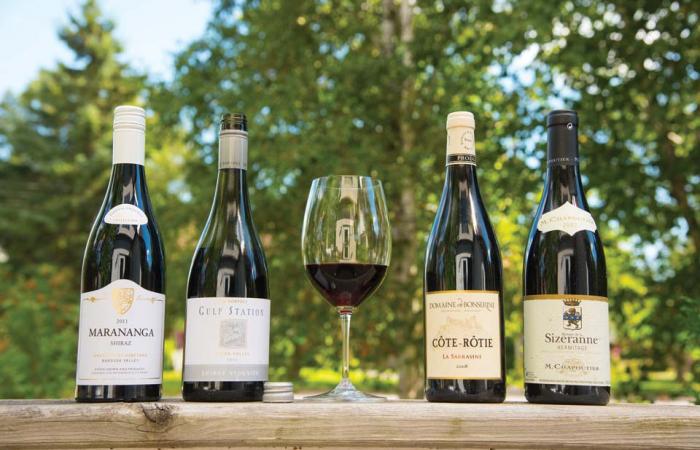Of all the old-world grapes that have made their way around the new world of winemaking, none has taken off as dramatically as the one the French call Syrah. Under its alternate name, Shiraz, it has excelled in the new world like none other, to the point where the new world versions are now the international standard to which all others are held.
Let’s begin with a bit of history: as the Romans expanded their empire across Europe, they followed the Mediterranean coast and the Rhone River into the very heart of Gaul. They cut back the forests along its banks to pacify the land, and planted grape vines, an essential part of the life, diet and culture they brought with them. Those Romans may be gone, but the vines they planted grow there still, and today provide some of the finest, strongest, most elegant and enduring (and expensive!) wines on earth. Their magic comes from their great grape, the Syrah. From this grape the French create Hermitage and Côte Rôtie, two profound wines from the granite hills first planted by the Romans. George Saintsbury called Hermitage “the manliest wine in France” for its power, structure and forcefulness; it also has incredible ageing potential. Côte Rôtie, on the neighbouring hill up-river, gentles the giant Syrah with a touch of white Viogner, making a similar but more accessible, aromatic wine. Lay these down in the coolest corner of your cellar and don’t even look at them for the first decade of their lives.
The fireworks began when the Australians discovered that Syrah – Shiraz – thrives in their parched sun-baked vineyards down-under. Australian wine regions, widely separated from each other by their notorious, inhospitable outback, remain isolated from various scourges that have swept through the world’s vineyards, most particularly the Phylloxera, a tiny insect that devastated Europe’s vineyards late in the 19th century. Phylloxera has never reached southern Australia, so this new country is where we find the oldest vines on earth. The Barossa Valley, a short distance north of the southern city of Adelaide, is home to some of the world’s finest Shiraz, growing on gnarled, stump-like one-hundred-and-fifty year-old ungrafted vines, yielding dense, concentrated, massive wines, filled with rich, dark chocolate aromas and peppery black olive and spicy fruit flavours, supported by a firm yet gentle tannic structure. So luscious are these wines that most are drunk in their voluptuous fruit-forward youth, and they are indeed delicious like that, but, if allowed to mature, they can evolve into smooth, round, complex elegant wines that rival the best of what France has to offer. Here is where Penfolds makes their legendary Grange, an ultra-premium Shiraz ranking among the world’s finest and most expensive wines. But Langmeil, Burge, Elderton, Two Hands among many others make excellent Shiraz from these ancient vines, yielding comparable wines at a fraction the price.
There is more good news: all across Australia producers make high quality Shiraz in all price brackets, from entry-level wines to sought-after cult status premium products. Some have taken to blending small amounts of Viogner into their muscular Shiraz, imitating the vintners of Côte-Rôtie in making a slightly lighter, more fragrant early approachable Shiraz. Near Adelaide, not far from Barossa, the McLaren Vales and the Adelaide Hills both produce sumptuous Shiraz that rivals those from Barossa. Price is a good general guide to quality here, but you don’t have to pay top dollar to find really good value: Chapel Hill, Penny’s Hill, d’Arenberg, Mitolo - all are worth investigating for their share of your wine dollar.
Follow Paul Inksetter’s wine writing on his blog, www.winewicket.com
© Paul Inksetter 2016


